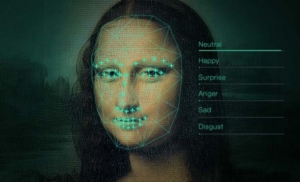Facial Response Analysis has provided companies and researchers with a unique look into how exactly their users are feeling, allowing them to gather a large amount of data and provide a better user experience. However, this method may not always pick up on specific or unique emotional expressions, causing inaccuracy amongst evaluation.
One element of great user experience design is a product that ignites positive emotions and engagement. This concept is called Emotional Design. Emotional Design is centered around the belief of users having a positive experience when engaging with a product. People should connect to a product/design on a personal level causing it to be relatable. But, how can researchers decipher what their users enjoy or dislike? By measuring emotions and engagements. Measuring the emotional reactions of users, allows researchers to view first-hand how their product is being received. One example of a tool used to measure emotion is facial response analysis, which is a software that can be used to detect emotion based on facial expressions such as a grin, furrowing of the eyebrow or a frown. Facial Response Analysis has provided companies and researchers with a unique look into how exactly their users are feeling, allowing them to gather a large amount of data and provide a better user experience.
Facial Response Analysis examines the emotions of users by studying the movements of the face from a video recording. The system uses computer algorithms to break down the video from a webcam and provide emotion measurements. The first step in analyzing the data is locating the face and then extracting the key facial expressions that are used to classify each emotional characteristic. The software distinguishes between facial movements such as the widening of the eyes or a large upward mouth. The results generated by the software produces an “engagement score” that signifies whether the user is, for example, focused on the given task (face looking at the screen) or expressing joy (smiling) (Schall).
Facial Response Analysis is one of the easiest methods to collect data and analyze. It does not require much interaction between researchers and users because it is more about the relationship between the user and the product/design. It is a less intrusive method, allowing users to exhibit more genuine notions about their experience. Data on any user satisfaction or frustrations can easily be noted because the user is engaging with the product. Companies are now working with emotional analysis software providers to understand what their users want. Facial analysis software providers include KAIROS who has work with companies like Ikea, Capital One, and IBM. AFFECTIVA, who has provided services to CBS and Kellogg’s and EMOTIENT which was recently bought by Apple in 2016 (Foster). Brands realize the importance of emotion design and want to achieve it.
However, research shows, it is also the least accurate. Results can be very accurate for highly expressive emotions such as a large smile, but they are not consistent for complex or subtle emotions such as a smirk or a “slight rise of the eyebrow” (Ying Ki). Inaccuracy or lack of measurements in facial analyzation may cause data to be imprecise. Facial Response Analysis has been proven to be more successful when combined with other methods of user testing. When paired with a survey, open-ended questions or eye-tracking, researchers can better understand the specific emotional experience of the user.
References:
Foster, T. (2016, June). Ready or Not, Companies Will Soon be Tracking Your Emotions. Retrieved from https://www.inc.com/magazine/201607/tom-foster/lightwave-monitor-customer-emotions.html/.
Schall, A. (2015, April). The future of UX research: Uncovering the true emotions of our users. In UX User Experience. Retrieved from http://uxpamagazine.org/the-future-of-ux-research/.
Ying Ki, S&J. (2015, December) Emotional UX-Techniques for Measuring User’s Emotions. Retrieved from https://eyetracking.com.sg/2015/12/15/emotional-ux-techniques-for-measuring-users-emotions/.
